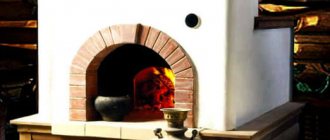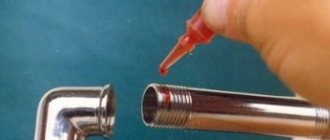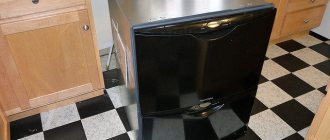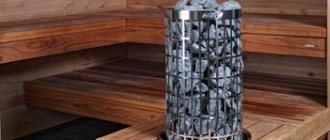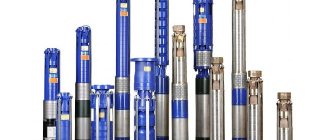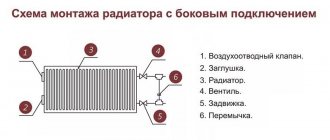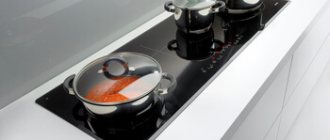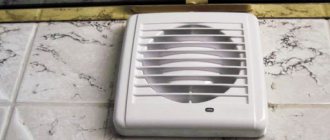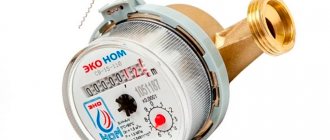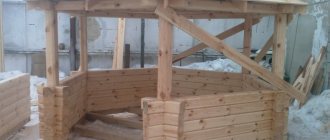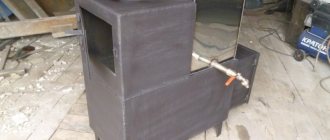Today on the paint and varnish market there are special products for treating stoves, fireplaces and various types of metal surfaces exposed to elevated temperatures. Heat-resistant varnish is such a product. The question of how to choose a heat-resistant varnish, what are its features and useful properties will be discussed below?
Specifics of heat-resistant varnish
The products are made from organic silicon and any petroleum-based solvent. Its main purpose is to protect stove or fireplace bricks, doors, dampers, and wooden structures made of steel or cast iron located near an open fire source.
A coating resistant to high temperatures can protect parts from fire, thereby ensuring fire safety in the house.
After drying, the varnish creates a protective layer on the surface of any material that cannot burn and does not allow oxygen to pass through to the inner layers. If you follow the varnish application technology, you can end up with a wooden structure that is not capable of burning.
The varnish has excellent adhesion to brick, stone, metal (cast iron and steel), wood, ceramic tiles, and plastered surfaces.
In appearance, the product is a transparent liquid, the consistency of which is slightly thinner compared to paint or enamel. The film formed on the material preserves its natural color and structure. This way you can decorate a stove, fireplace or barbecue well.
What is liquid thermal insulation
Let me start with the fact that the development of this product has been carried out since the seventies in the military space industry of both our country and America. A lightweight material was required, but with unique heat-insulating properties. Today, all advanced technologies have migrated into our everyday lives precisely from the military industry. And warm paint in this case is no exception. Now all the best is for peaceful purposes.
Insulation paint is a polymer binder made of acrylic or latex. It also contains fillers made from the smallest ceramic, glass or polymer beads and various additives that determine different areas of application. In a word, this is a complex chemical compound, the development of which took a lot of time and money.
How does modern insulation paint work?
Due to its unique properties, liquid insulation already begins to work at a thickness of 1 mm. This breaks the whole stereotype in our usual insulation. After all, we are used to the more the better. In this case, no more is needed. 1 millimeter of heat-insulating paint is approximately equal in thermal insulation to 5 cm of mineral wool insulation. Agree, this is a worthy indicator.
Once upon a time, while studying at school, we were taught that vacuum is the best insulator. Sound, heat, and electricity do not travel through it. This explains the phenomenal effect of using heat paint. Since there is a vacuum in the microscopic ceramic balls, the result is a kind of mini-thermos, of which there are millions, and maybe billions.
Due to such a complex molecular structure, thermal energy is reflected. All three types of heat transfer, namely convection, conduction and radiation, are almost completely reflected. The protected surface always remains pleasantly warm.
Popular brands
The highest resistance levels will be achieved after treating the surface with a varnish based on silicone and aluminum. It is able not to lose its properties even at a temperature of +600°C, therefore it is often used in the industrial sector. For home needs, simpler silicon-based options are quite suitable.
There are several types of heat-resistant varnishes that are in demand:
Compositions of the KO-85 brand. Operates at temperatures from -40°C to +300°C. They are used in everyday life and in production (when painting pipelines, for example). After application, the varnish dries quickly, forming a glossy protective film of light brown color. The service life of the product is approximately 10 years.
Compositions of the KO-815 brand. They found their application in painting the internal parts of stoves. These varnishes can withstand low negative temperatures (down to -60°C). A special feature of the varnishes of this brand is their drying technology. This is not possible at normal temperatures, so infrared lamps are used.
Without priming the surface to be treated with special compounds, the varnish will not be able to adhere well to the material, and over time it will begin to peel off.
How to treat a brick stove and fireplace. How to paint the brick of a fireplace and Russian stove.
The stove maker’s task is to make you a decent stove and fireplace according to your requirements with a service life comparable to the service life of the house and bathhouse where they are stored. For long-term operation of the stove and fireplace, you need to CORRECTLY solve the problem “how to treat a brick stove and fireplace and how to paint the brick of the fireplace and Russian stove.” Stove brick, as well as the seams of the stove and fireplace masonry, can crumble and delaminate due to the penetration of excess moisture and atmospheric sediments into the porous structure of the brick, which is apparently made poorly or in violation of its firing technology. As a result, the porosity of the kiln brick is increased.
Features of oven varnishing
Heat-resistant stove varnish should have greater adhesion than regular varnish. However, the surface still needs to be carefully prepared and the varnishing technology must be followed. First of all, you need to ensure the room temperature is between 18°C and 25°C. Good ventilation is required.
In cases where work is carried out outdoors, it is best to do this in warm and dry weather. Open the jar carefully, then mix the varnish thoroughly, adding color if necessary.
The surfaces to be treated are cleaned with a metal brush. All dust is swept away. If there are grease stains, they can be removed with a detergent or a more aggressive composition. After which the surface is rinsed with clean water.
After complete drying, the priming stage begins. For this purpose, special compositions recommended by varnish manufacturers are used. When the primer has dried, you can proceed directly to varnishing. You can use a brush, roller, spray gun or sponge.
The main thing is to prevent the formation of drips and air bubbles. After applying the first layer, wait an hour for it to dry sufficiently. Then the procedure is repeated. In this way, good protection indicators can be achieved, and the stove itself will look impressive due to the decorative nature of the varnish coating.
Heat-resistant varnish for metal allows you to obtain a corrosion-resistant product that can withstand temperatures up to +250°C. When varnishing the metal parts of a stove or fireplace, a transparent protective film is formed that is resistant to the harmful effects of atmospheric factors and gives them decorative properties.
In addition to the external effect, heat-resistant varnish can provide high-quality protection for many materials. Heat, freezing and moisture will be a mere trifle for varnished surfaces.
The advantages of such products are beyond doubt; you just need to choose the right option for your specific needs and carry out the necessary work in accordance with the technology. Fortunately, store catalogs offer a wide variety of photos of heat-resistant varnishes, and experienced consultants are always ready to help.
Functions of the paint and varnish coating of a brick heater
Painting a stone heating device is carried out for the following purposes:
- protection of the stove surface from absorbed contaminants, and clothing from brick dust upon contact with brickwork;
- facilitating daily care, that is, maintaining the necessary sanitary and aesthetic condition;
- increasing the decorative design class of the unit;
- adapting the design of the heating device to the existing interior.
Brick heaters coated with colorless heat-resistant varnish
*
If the bricklaying was done without sorting the stone by color, then painting the body with a heat-resistant paintwork material (paint and varnish material) of one or more colors will correct the situation. But even a stove finished with face brick is transformed after applying, for example, a colorless paint coating, which gives a richness and matte hue to the stonework.
Photo of heat-resistant varnish
Thermal insulating paint for walls: composition and scope of application
The composition of paints for thermal insulation is a mixture of:
- fillers;
- evacuated glass beads;
- water;
- acrylic-based dispersions;
- fiberglass;
- foam glass;
- perlite (in expensive types, perlite is replaced with ceramic microspheres).
Scope of material application:
- facades;
- pipes, including heating mains, water supply, gas;
- heating boilers;
- insulation of tanks and industrial equipment;
- walls in the apartment;
- basements.
The paint is applied in a relatively thick layer (4 mm), and therefore its use can replace several millimeters of external insulation or serve as an additional heat preservation system.
The condition for the thermal insulation function is an even layer around the perimeter, and therefore it is better to use a spray gun to evenly distribute the viscous consistency
How to choose?
When choosing a thermal insulation material, it is important to consider the location of the painting work (indoors or outdoors) as well as the type of surface being treated. Before purchasing thermal paint, it is also advisable to familiarize yourself with the list of popular manufacturers and study reviews of their products.
Some recommendations for selection:
- for exterior work, you should select paint with high levels of water resistance and heat resistance;
- for indoor work, you need to purchase paint that does not contain toxic substances;
- the mixture for painting gas and water pipes must have the highest heat resistance.
It is worth remembering that when painting, quite a lot of heat-insulating composition is consumed. Before purchasing a suitable liquid insulation, it is important to calculate in advance the required amount of mixture.
When calculating, the following factors must be taken into account:
- Surface area to be painted.
- The type of material that will be coated with paint and varnish. To cover a wooden, brick or concrete surface, paint overconsumption can range from five to ten percent. Painting the metal may require an additional three to six percent of the mixture.
- Presence of defects on the surface. If there are small cracks or irregularities, it is worth considering that painting such areas will require an additional amount of liquid heat insulator. Overconsumption of the mixture can reach forty percent.
- The number and thickness of paint layers you plan to apply to the surface. Recommended coating thickness for different materials:
- For concrete - one and a half millimeters.
- For wood - two millimeters.
- For metal, brick, cellular concrete and expanded clay concrete - two and a half millimeters.
To calculate the approximate amount of paint, you need to multiply the surface area, the consumption rate (liter/sq. m) and the number of intended layers.
Surface preparation
Before applying paint, it is necessary to properly prepare the surface. On a dirty, uneven base, the coating will not last long, and therefore all efforts and financial costs will be in vain.
Dust, dirt and oily formations are carefully removed from the surface. All cracks and cracks are sealed. They also get rid of uneven surfaces by using a metal brush, grinder or sandblaster.
Note! In the case of concrete, the surface should be cleaned of the so-called “cement laitance” - dust, which greatly impairs the adhesive qualities of the coating.
When the surface is cleaned and leveled mechanically, a primer is applied. VL-02 or VL-023 are most often used as priming compositions.
Thermal insulation paint: buy or use traditional insulation?
Since its inception, liquid thermal insulation has significantly displaced traditional types of insulation in the building materials market. Without being inferior in environmental friendliness, it ensures a reduction in labor costs, consumption of building materials, and has improved characteristics:
- Minimal load on load-bearing structures - a layer of several microns instead of the standard 50 - 20 mm
- Easy to use – painting with a spray gun, roller, brush
- universal in use - treatment of walls, ceilings, the inside of the roof, basements
- Does not require cutting - no trimmings or waste requiring disposal
- Convenient to store and transport - a bucket of paint takes up much less space than a stack of polystyrene foam sheets and can be transported by car or manually
Thermal insulation paint, which you can buy in our store, is available in various packaging, allowing you to choose the right amount to reduce your repair budget. Prices can be viewed on the page of each product.
Efficiency assessment from experts
Liquid insulation today is just gaining the trust of consumers, but there are already opposing opinions about the effectiveness of using “liquid ceramics”. For example, the calculations are given:
- extruded polystyrene foam in fact (50 mm) costs 300 rubles. (sq. m);
- assume thickness 1mm, price per sq. meter - 6 rubles;
- the total cost in equivalent of ultra-thin thermal insulation is 450 rubles/liter;
- With the recommended consumption of thermal paint, its price is for the same 1 sq. m. (thickness 1 mm) when applied in a single layer is 100 times higher than that of expanded polystyrene.
In contrast to such reasoning, other experts give the example that the thermal insulating properties of the extruded polystyrene foam given as an example are at least 50 times lower, and the surface emissivity due to the roughness of the thermal paint is much higher. When treating the surface with “liquid ceramics”, the effect of a “thermal mirror” is obtained. Believing one reasoning or another is an individual matter, but experts agree that there is no alternative to liquid ceramics in hard-to-reach places. It is difficult to imagine insulating with mineral wool under a window sill or in other places, but thermal insulation paint does an excellent job of this task, leaving no seams or bends.
The material's high adhesion helps insulate the surface from moisture, water and cold air, eliminating the potential for external corrosion and rust formation.
Varieties
The type of warm paint is conventionally divided according to two characteristics:
- composition: acrylic or water base;
- by area of application: for indoor work, for pipes, facade - exclusively for outdoor work.
Thermal insulation paints for interior work
For work inside buildings, both acrylic and water-based compositions are suitable. An important task is to determine the functional load, as well as study the composition, which should not contain toxic components. To treat pipes, heating mains, and gas pipelines indoors, use interior paint, preferably acrylic-based, and for painting cold walls, you can use a water-based composition.
Insulating paints for exterior work
For outside work, it is necessary to select thermal insulation materials taking into account the functional characteristics of the surface and environmental conditions (humidity, frost, sunny side). It is better to choose a mixture with minimal water resistance and the highest vapor permeability, so that heat will be retained and the treated surfaces will not deteriorate.
Fighting condensation with heat paint
Liquid thermal insulation allows you to avoid the manufacture of complex structures necessary for attaching a thermal insulation layer near the roofs of hangars and residential buildings. Painting pipelines of engineering systems is much cheaper than protecting pipelines with polystyrene foam shells, winding with basalt wool, and then waterproofing the insulation.
Condensation control is available to a home craftsman with minimal painting skills. Liquid thermal insulation is sold in convenient buckets and jars, is completely ready for use, and has instructions for use. The weight of the roof practically does not increase when applying a millimeter layer, while the comfort of using the premises increases many times over.
